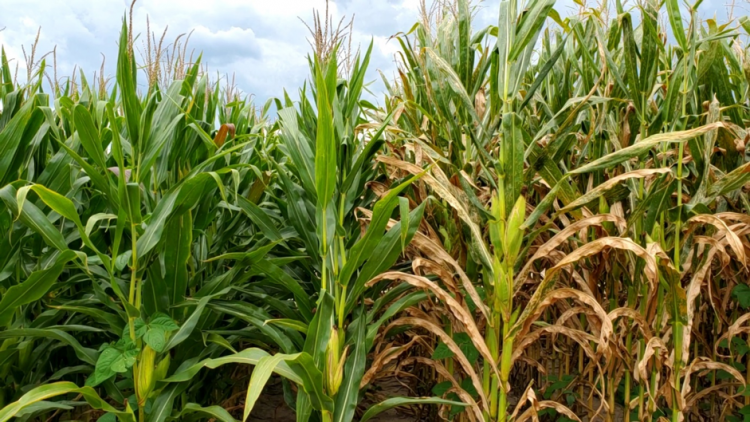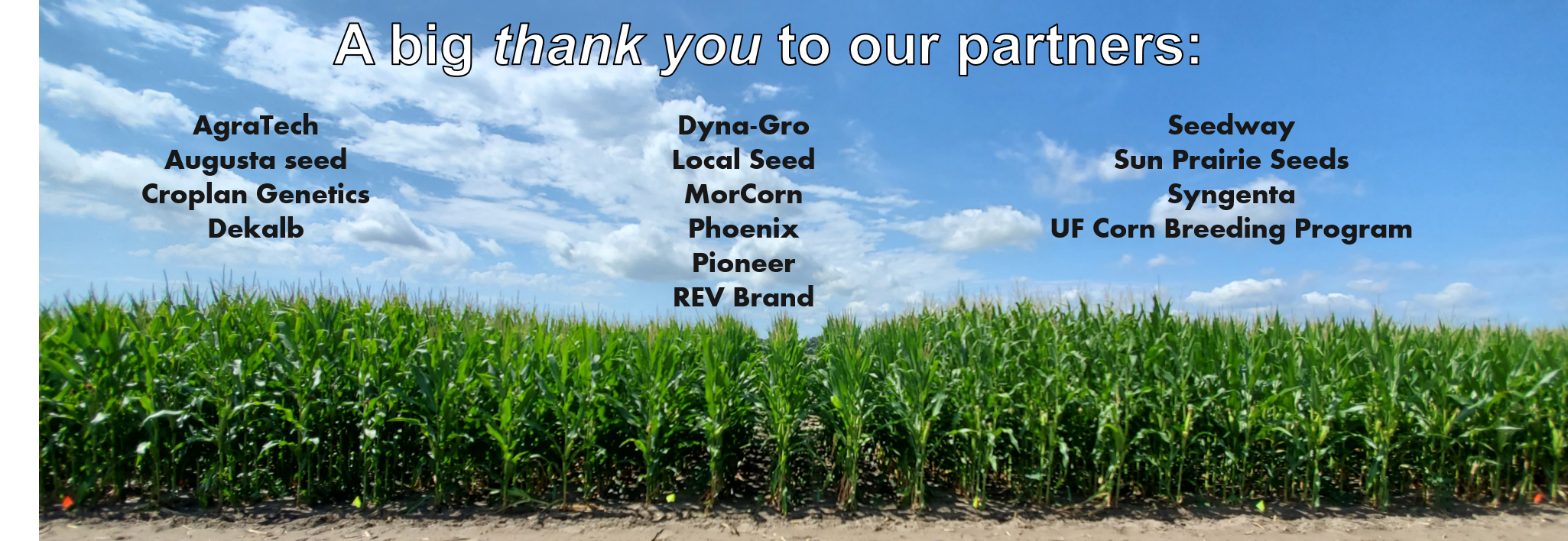2020 has been a year of many challenges so far, but that didn’t stop our corn hybrid trial from being excellent! With cold nights and sunny days at the beginning of the season, great genetic material, and a fantastic dedication of the UF/IFAS Plant Science Research and Education Unit staff, our corn looks better than ever (Figure 1). Since 2002, the UF/UGA Corn and Sorghum Hybrid Trial and Corn Silage Field Day have been providing important information for Florida and Georgia producers on performance of corn and sorghum hybrids for silage. Our trial this year features 47 hybrids from 14 companies, with several standards and a few new materials being tested. Given the circumstances generated from the Covid-19 pandemic, we could not have our traditional field day this year. But we innovated, and it was a success! On June 11th, we had about 60 people from all over the country joining us on our virtual tour and round table with industry representatives, faculty from UF and UGA, and producers. The video showcasing the 2020 trial and partners is now available below. The results from this and past trials since 2008, and presentations given at past field days can be found at the Corn Silage and Forage Field Day website.
–
–
–
What is the importance of these hybrid trials?
Data from the hybrid trials provides valuable information on performance and adaptation of mainstream genetic materials to conditions in Florida and Georgia. This information provides producers with the opportunity to make a well informed, science based decision about which corn and sorghum hybrids to choose for their operation.
Table 1 below, is an example of how the data is presented. Our first indicator is productivity, shown as dry matter (DM) or “as harvested” (35% DM corrected) per acre. The later gives you an estimation of how much actually biomass you will be able to ensile. However, just biomass alone is not a good decision point. Since forage quality plays a major role in milk production, it is important to look at the nutritional parameters. To facilitate, based on University of Wisconsin’s MILK2006, we estimate the milk per ton of silage, and the potential milk production per acre of corn or sorghum silage. An example of how these factors interact is show in Table 1: Hybrid 1 is more productive, Hybrid 2 produces more milk per ton of silage, and both are similar in milk production per acre. This kind of scenario is possible because of variations in fiber (neutral and acid detergent fiber – NDF and ADF), and starch concentrations. Fiber concentration and fiber digestibility influence intake and nutrient availability.
–
Another very important characteristic is diseases resistance (Figure 2). Florida’s rainy and humid summers put a lot of disease and insect pressure on all the hybrids. This is especially true for summer plantings. Although our data does not directly report disease resistance, evaluating how a hybrid performs and ranks compared to others, across years, can give an idea of how well adapted it is to local conditions.

Figure 2: Comparison of two corn hybrids of similar relative maturity. The high disease incidence on the right hybrid will result in decreased nutritive value, yield and will require harvesting promptly to avoid further losses or dry out (Credit: Marcelo Wallau, UF/IFAS
–
Should I choose the “best” hybrid in the trial and plant it on all of my acreage?
Likely not, for multiple reasons. First, hybrids have other technologies and traits, like stay green, insect resistance and many other traits, which are not evaluated in our trials. You have to determine what most fits your needs. Second, planting hybrids with different relative maturity can be very helpful for staggering harvest, so you can harvest everything at adequate maturity. Three or four extra days in the field can result in a major drop in the quality of the silage. Third, using different genetic materials and traits will reduce the risk of a disease or insect problems. Consult your local seed representative to see what performs well in your region and compare that to the information from the results of our trials. For more information on hybrid selection, check out What to look for when selecting corn silage hybrids, a great article from my colleague Bruce Anderson at the University of Nebraska. Stay tuned by following our Facebook page (@UFForageTeam) for updates on this and other projects by the UF/IFAS Forage Team.
–
- 2025 Southeastern Hay Contest Sets New Records - October 24, 2025
- 2025 Cool-Season Forage Official UF/IFAS Variety Trial Results - September 5, 2025
- Revisiting Crop–Livestock Integration in the Southeastern United States - September 5, 2025



